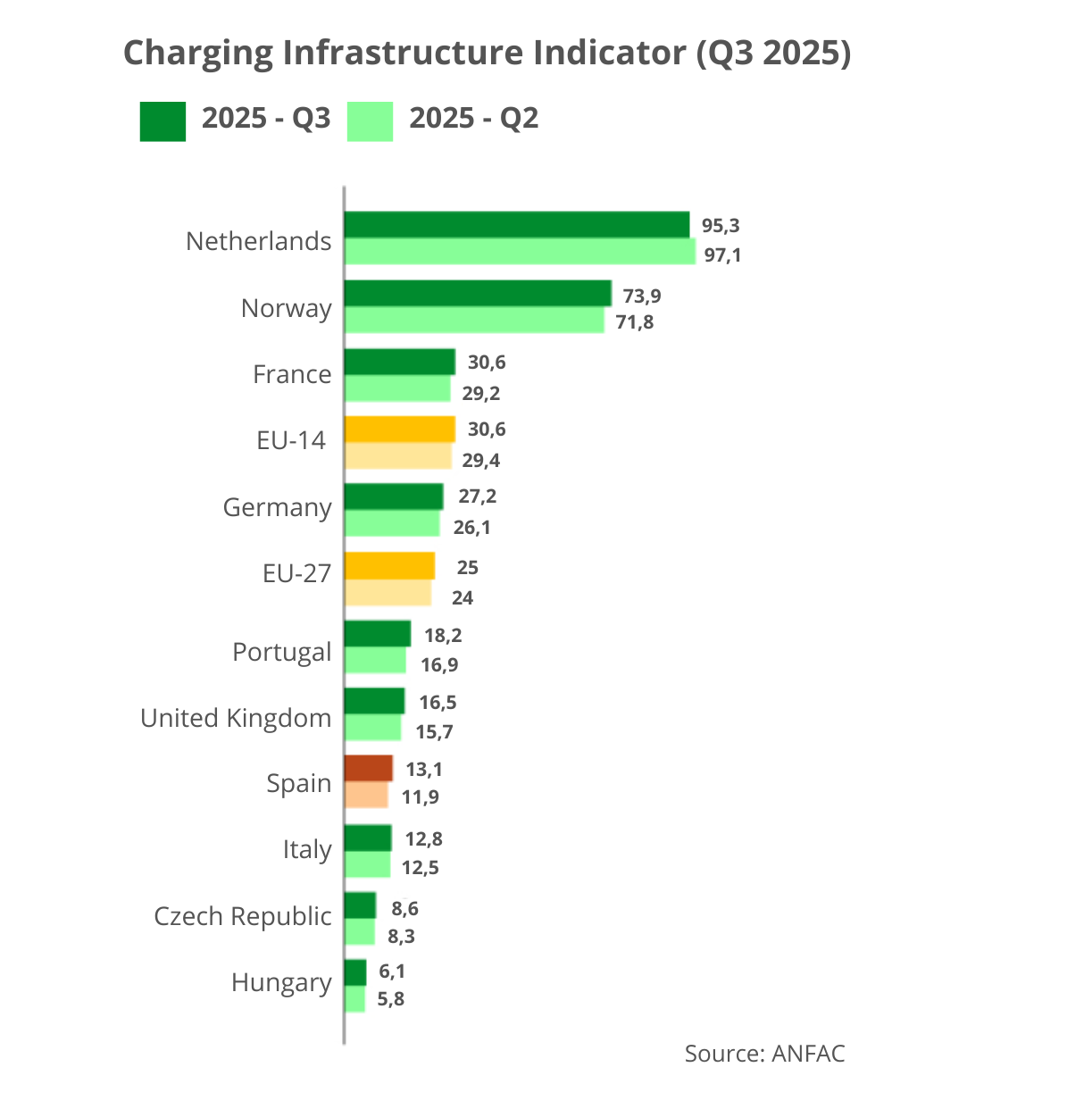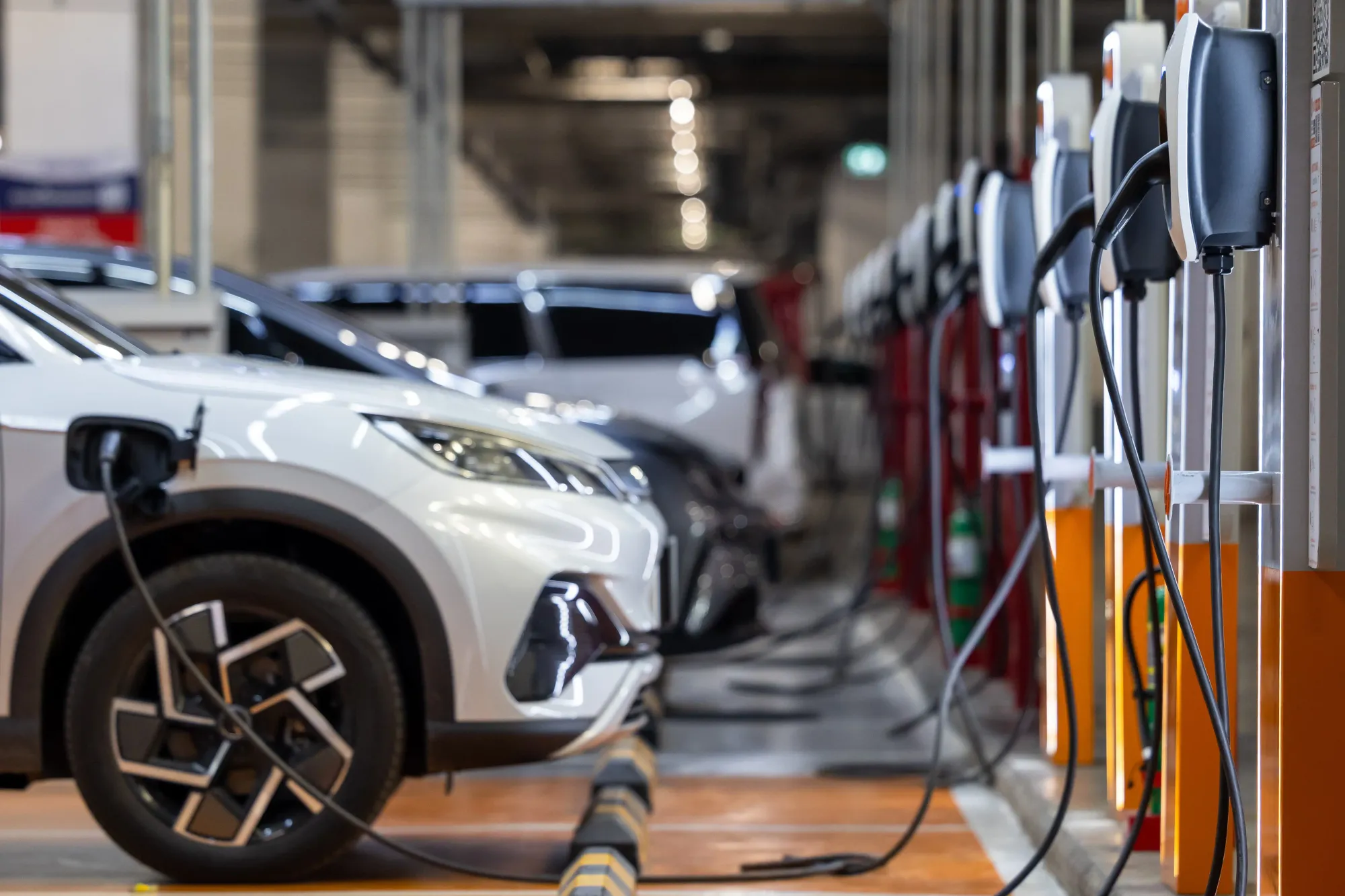Currently, the infrastructure for recharging electric vehicles in Europe is growing, but not at the pace needed to meet the European Commission's ambitious targets.
The European Union has around 910,000 operational charging points, a figure that may seem high, but which only represents 26% of the Commission's target of 3.5 million by 2030.
This gap is not only due to the number of chargers, but also to other critical factors: how they are distributed across the territory, the power of each station (many installations are slow) and reliability.
The transition to full electric mobility requires not only more charging points, but also higher quality ones.

European targets for 2030: Are they being met?
The targets set by the European Commission for 2030 are very ambitious. It is expected that there will be 3.5 million public charging points across the EU by then.
However, the latest data shows that at this rate, they will not be met.
According to Motointegrator, if Europe continues to build around 150,000 points per year, by 2030 it will only reach 1.7 million, leaving a shortfall of almost 2.5 million stations.
On the other hand, the European Automobile Manufacturers' Association (ACEA) goes further and estimates the actual needs at 8.8 million points by 2030, based on the rate of adoption of electric vehicles.
Reaching that level would require installing around 1.2 million chargers per year, which is eight times the current installation rate.
In addition, the recent ANFAC Electromobility Barometer offers a more local view focused on Spain, but useful for understanding how Europe as a whole may fare.
In the second quarter of 2025, the Spanish public network grew by 3%, reaching 47,892 points, although more than 13,700 were installed but not operational.
This operational delay also makes it difficult to achieve the proposed targets.
Areas with fewer charging points
The geographical distribution of charging points in Europe is deeply uneven. Not all countries or areas have equal access to these plugs.
Motointegrator points out that the network is growing at ‘two speeds’: while some nations such as the Netherlands already have more than 665 points per 100,000 inhabitants, other countries are lagging far behind.
This disparity is also evident between urban and rural areas. Large cities tend to have a concentration of points, while on secondary roads or in less populated areas there may be long stretches without a single charger available.
In addition, administrative barriers such as permits to install stations and connection to the electricity grid are delaying deployment where it is most needed.
Fast charging points: Are there enough in Europe?
Fast charging points, also known as fast chargers, are high-power stations (e.g. 50 kW or more) that allow a significant portion of the battery to be recharged in minutes rather than hours.
This is essential for fast and convenient roadside recharging.
The European Commission, through the AFIR (Alternative Fuels Infrastructure) Regulation, requires high-power chargers to be available every 60 km on the priority corridor network.
But according to experts, the actual rollout is lagging behind these requirements and there are not enough fast chargers to provide dense and reliable coverage of the European network.
This power deficit has practical consequences: many drivers face long waiting times, queues or simply a lack of stations on key routes.
Furthermore, although some companies and investors are already investing in fast (even ultra-fast) networks, incentives and regulation are not always aligned with the urgency of deploying this infrastructure in a systematic manner.
Conclusion
In summary, Europe has made progress in deploying charging points for electric vehicles, but it is still far from meeting the targets set by the Commission for 2030.
It is not just a question of volume: uneven distribution, the lack of power in many chargers and the low operability of some stations complicate the scenario.
To close the gap, it will be essential to speed up authorisations, strengthen electrical connections, prioritise the installation of fast chargers and ensure that new points are operational and accessible to all.
Otherwise, the ambition of truly mass electric mobility could stall prematurely.
In this regard, the development of a more robust, faster and easier-to-use network (e.g. with “plug and pay” or card payment) not only meets a technical objective but could also be a key driver in encouraging more people to choose electric cars.
Helpful Resources:
Motorintegrator - Europe 2030: 2.5 million charging points (74%) are missing
ANFAC - Electromobility Barometer
Energynews – Europe 2030: Lack of charging points for electric cars
Euronews - Electric cars: Could improving the charging network increase demand?
